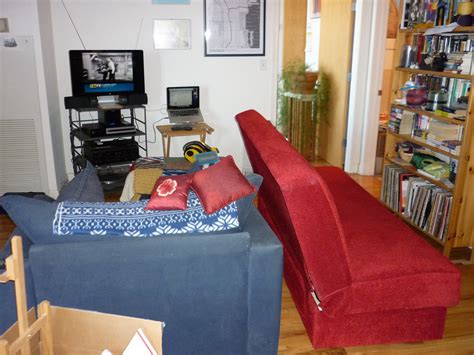
Eleven common interior design choices can inadvertently cheapen the appearance of a home, according to design experts. Ranging from outdated trends to neglecting scale and proportion, these decor faux pas can undermine the overall aesthetic and perceived value of a space.
Design professionals caution homeowners to avoid these mistakes to cultivate a more sophisticated and visually appealing environment. The revealed list includes generic wall art, faux plants, furniture sets, too-small rugs, visible cords, excessive throw pillows, matching furniture, poor lighting, cluttered surfaces, sheers used alone, and neglecting hardware upgrades.
Eleven Decor Choices That Can Diminish a Home’s Appeal
Interior design is more than just arranging furniture; it’s about creating a cohesive and aesthetically pleasing environment that reflects personal style while maximizing the perceived value of the space. However, certain common decor choices can inadvertently detract from a home’s appeal, making it appear less polished and sophisticated. Experts are now highlighting eleven specific pitfalls that homeowners should avoid to elevate their interior design and create a more inviting and stylish atmosphere.
1. The Pitfalls of Generic Wall Art
Mass-produced, generic wall art is a prevalent decor choice, but experts caution that it often lacks personality and can cheapen a space. These pieces, frequently found in chain stores, tend to be unoriginal and fail to add character or depth to a room.
Instead of opting for generic prints, designers recommend investing in original artwork, limited edition prints, or even creating personalized pieces. “Consider artwork that speaks to your individual style and interests,” suggests one design expert. “This could be anything from a painting by a local artist to a framed photograph that you took yourself.”
Incorporating unique and meaningful artwork not only enhances the visual appeal of a room but also adds a personal touch that reflects the homeowner’s individuality. Galleries, art fairs, and online marketplaces can provide access to a wide range of art at various price points. Framing is also essential to elevate artwork. Custom framing can complement the artwork and your existing decor.
2. The Unrealistic Allure of Faux Plants
While faux plants might seem like a low-maintenance way to add greenery to a space, they often appear artificial and can detract from the overall aesthetic. Low-quality faux plants, in particular, are easily identifiable and can make a room look dated and cheap.
“The problem with faux plants is that they rarely look realistic,” explains one designer. “Unless you invest in high-quality, lifelike versions, they can end up looking tacky and unconvincing.”
If incorporating greenery is desired, designers recommend opting for real plants whenever possible. Real plants not only enhance the visual appeal of a room but also provide health benefits, such as improved air quality. For those who lack a green thumb, low-maintenance options like succulents, snake plants, or ZZ plants are excellent choices. If faux plants are unavoidable, prioritize quality and choose varieties that closely mimic their real counterparts. Ensure the faux plant is in a fitting container and free of dust.
3. The Uniformity Trap of Furniture Sets
Purchasing matching furniture sets may seem like a convenient way to furnish a room, but designers caution that it can result in a monotonous and uninspired space. Matching sets often lack character and can make a room feel generic and impersonal.
“Mixing and matching furniture pieces allows you to create a more unique and personalized space,” advises one interior design professional. “Don’t be afraid to combine different styles, textures, and materials to create a layered and interesting look.”
Instead of opting for a complete furniture set, consider purchasing individual pieces that complement each other but aren’t identical. This approach allows for greater flexibility and creativity, resulting in a more dynamic and visually appealing room. Varying wood tones, fabric textures, and furniture styles can create an interesting look.
4. The Importance of Rug Size
Using a rug that is too small for a space is a common design mistake that can disrupt the room’s proportions and make it feel disjointed. A rug that is too small can make the furniture appear to be floating and create a sense of imbalance.
“A rug should anchor the furniture in a room and define the seating area,” explains one designer. “Ideally, all of the furniture legs should be on the rug, or at least the front legs of the sofa and chairs.”
When selecting a rug, it’s essential to consider the size of the room and the placement of the furniture. A rug that is appropriately sized will help to create a cohesive and inviting space. Measure the area before buying a rug to ensure a proper fit.
5. Managing Visible Cords
Exposed cords and cables can create a cluttered and unsightly appearance, detracting from the overall aesthetic of a room. Tangled cords can make a space look messy and unfinished.
“Hiding or managing cords is an easy way to instantly improve the look of a room,” says one design expert. “There are many simple solutions available, such as cord covers, cable organizers, and strategically placed furniture.”
Various cord management solutions are available, ranging from simple cable clips to more elaborate cord covers and concealers. By investing in these solutions, homeowners can easily eliminate visible cords and create a cleaner, more organized space. Consider using decorative boxes or baskets to conceal power strips and excess cables.
6. The Perils of Excessive Throw Pillows
While throw pillows can add comfort and style to a sofa or bed, using too many can create a cluttered and overwhelming look. An excessive number of throw pillows can make a seating area feel crowded and uncomfortable.
“A few well-chosen throw pillows can enhance the look of a sofa or bed, but too many can be overwhelming,” advises one interior designer. “Stick to an odd number of pillows and vary the sizes, shapes, and textures for a more balanced and visually appealing look.”
Designers recommend limiting the number of throw pillows and carefully selecting colors, patterns, and textures that complement the existing decor. Experiment with different arrangements to find a balance that is both stylish and comfortable.
7. Avoiding Matchy-Matchy Furniture
Similar to furniture sets, excessively matching furniture can create a monotonous and uninspired space. When everything matches perfectly, the room can feel sterile and lacking in personality.
“Creating contrast and visual interest is key to a well-designed room,” explains one design professional. “Don’t be afraid to mix and match different styles, colors, and textures to create a more dynamic and engaging space.”
Instead of opting for furniture that is too similar, consider incorporating pieces with varying finishes, shapes, and styles. This approach will add depth and character to the room, creating a more visually appealing and personalized space.
8. The Significance of Lighting
Poor lighting can significantly detract from the overall aesthetic of a room. Inadequate lighting can make a space feel dark, gloomy, and uninviting, while harsh or unflattering lighting can create an uncomfortable atmosphere.
“Lighting is one of the most important elements of interior design,” says one designer. “It can dramatically affect the mood and atmosphere of a room.”
Designers recommend incorporating a variety of lighting sources, including ambient lighting, task lighting, and accent lighting, to create a well-lit and balanced space. Ambient lighting provides overall illumination, task lighting is used for specific activities, and accent lighting highlights architectural features or artwork. Ensure all lighting fixtures are the appropriate size and scale for the space.
9. Decluttering Surfaces
Cluttered surfaces can create a sense of chaos and disorganization, detracting from the overall appeal of a room. Clutter can make a space feel smaller and less inviting.
“Keeping surfaces clear and organized is essential for creating a calm and inviting space,” advises one interior design expert. “Remove unnecessary items and store belongings in designated areas to maintain a tidy and clutter-free environment.”
Regularly decluttering surfaces and storing items in their proper places can significantly improve the look and feel of a room. Consider using storage solutions such as baskets, bins, and shelves to keep clutter at bay.
10. Sheer Curtains Alone
Using sheer curtains as the sole window covering can provide privacy during the day, but they often lack the ability to block out light and provide adequate privacy at night. Sheer curtains alone can also make a room feel unfinished and lacking in substance.
“Sheer curtains can be a beautiful addition to a room, but they shouldn’t be used alone,” explains one designer. “Layering sheer curtains with heavier drapes or blinds allows you to control the amount of light and privacy in the room.”
Designers recommend layering sheer curtains with other window treatments, such as blackout curtains, blinds, or shades, to provide both light control and privacy. This approach allows for greater flexibility and creates a more layered and sophisticated look.
11. Neglecting Hardware Upgrades
Outdated or mismatched hardware, such as cabinet knobs, drawer pulls, and door handles, can detract from the overall aesthetic of a room. Neglecting these small details can make a space feel dated and unfinished.
“Upgrading hardware is a simple and inexpensive way to instantly improve the look of a room,” says one design expert. “Choose hardware that complements the style of the room and coordinates with other finishes.”
Designers recommend replacing outdated or mismatched hardware with new pieces that reflect the desired style and aesthetic. This small upgrade can have a significant impact on the overall look and feel of a room.
Conclusion
By avoiding these eleven common decor mistakes, homeowners can significantly enhance the aesthetic appeal of their homes and create more stylish and inviting spaces. Paying attention to details, such as artwork, greenery, furniture selection, lighting, and hardware, can elevate the overall design and create a more sophisticated and personalized environment. Interior design, when done right, reflects the individual’s personality and transforms a house into a home.
Frequently Asked Questions (FAQ)
1. Why is generic wall art considered a decor fail?
Generic wall art, often mass-produced and lacking originality, fails to add personality or depth to a space. It can make a room feel impersonal and cheapen the overall aesthetic. Design experts recommend investing in original artwork, limited edition prints, or personalized pieces that reflect individual style and interests. “Consider artwork that speaks to your individual style and interests,” says one design expert. “This could be anything from a painting by a local artist to a framed photograph that you took yourself.” Incorporating unique and meaningful artwork enhances visual appeal and adds a personal touch. Galleries, art fairs, and online marketplaces provide access to a wide range of art at various price points, allowing homeowners to find pieces that resonate with them without breaking the bank. Custom framing elevates artwork.
2. Are faux plants always a bad idea in interior design?
While faux plants might seem like a low-maintenance way to add greenery, they often appear artificial and can detract from the overall aesthetic. Low-quality faux plants, in particular, are easily identifiable and can make a room look dated. “The problem with faux plants is that they rarely look realistic,” explains one designer. “Unless you invest in high-quality, lifelike versions, they can end up looking tacky and unconvincing.” If incorporating greenery is desired, designers recommend opting for real plants whenever possible, as they enhance visual appeal and provide health benefits. However, high-quality faux plants can be acceptable if chosen carefully and maintained well. Prioritize lifelike varieties and ensure they are free of dust.
3. How can I avoid the “furniture set” look without completely disregarding coordinated design?
Purchasing matching furniture sets may seem convenient, but designers caution that it can result in a monotonous and uninspired space, lacking character and feeling generic. “Mixing and matching furniture pieces allows you to create a more unique and personalized space,” advises one interior design professional. “Don’t be afraid to combine different styles, textures, and materials to create a layered and interesting look.” Instead of a complete set, purchase individual pieces that complement each other but aren’t identical. Varying wood tones, fabric textures, and furniture styles create an interesting look. Start with a core piece, like a sofa, and then select accent chairs, tables, and other items that harmonize in color and style but are not exact matches.
4. What is the ideal size for a rug in a living room, and how do I choose the right one?
Using a rug that is too small for a space is a common design mistake that can disrupt the room’s proportions and make it feel disjointed. “A rug should anchor the furniture in a room and define the seating area,” explains one designer. “Ideally, all of the furniture legs should be on the rug, or at least the front legs of the sofa and chairs.” When selecting a rug, consider the size of the room and furniture placement. Measure the area before buying. A rug that allows all furniture legs to sit on it creates a cohesive and grand feel. If space is limited, ensure the front legs of major furniture pieces, like sofas and chairs, are on the rug to anchor the seating area.
5. How can I effectively manage visible cords without making it look messy or drawing more attention to them?
Exposed cords and cables create a cluttered and unsightly appearance, detracting from the overall aesthetic of a room. Tangled cords make a space look messy. “Hiding or managing cords is an easy way to instantly improve the look of a room,” says one design expert. “There are many simple solutions available, such as cord covers, cable organizers, and strategically placed furniture.” Use cord covers, cable organizers, and furniture strategically. Decorative boxes or baskets conceal power strips and excess cables. Route cords along baseboards or under rugs to minimize visibility. Cable sleeves organize multiple cords into a single, less obtrusive bundle.









